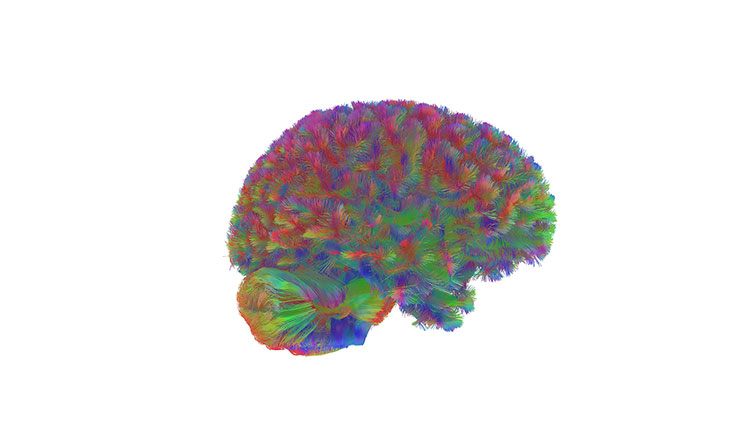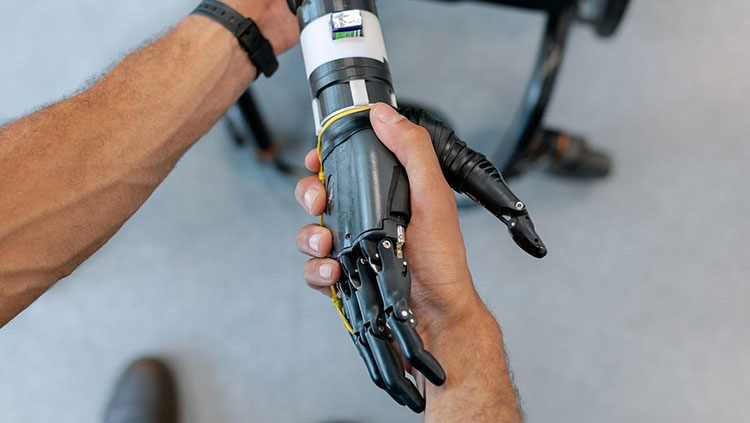ICYMI: Mind-Reading Device Helps a Paralyzed Man Speak
- Published4 Aug 2021
- Author Alexis Wnuk
- Source BrainFacts/SfN

A brain-machine interface device enabled a paralyzed man to speak for the first time in 18 years, researchers reported July 15 in the New England Journal of Medicine. The 38-year-old man suffered a devastating stroke at age 20 that left him unable to move or speak. But researchers hoped they could tap into the electrical signaling in areas of his brain involved in speech production. If the areas were still functional, they could, perhaps, eavesdrop on them while the man thought about speaking. By implanting an array of electrodes into the man’s sensorimotor cortex, the team recorded the brain’s signals as he imagined speaking different words. Then, they trained an artificial intelligence algorithm to decode the unique patterns of electrical activity and recognize individual words, which then popped up on a computer screen. The AI got it right half the time and enabled the man to communicate around 15 words per minute.
Related: Brain-Machine Interfaces: Converting Thoughts Into Action
Read more: Tapping Into the Brain to Help a Paralyzed Man Speak. The New York Times
More Top Stories
- The U.S. is increasing funding for primate research centers. Nature
- Long COVID may damage nerve fibers in the eyes. WebMD
- Gene therapy helps children with a rare neurotransmitter deficiency disease. STAT
- Researchers are learning how menopause changes women’s brains. The New York Times
- In a first, scientists discover a 310-million-year-old fossilized horseshoe crab brain. Live Science
- Walking bulks up the brain’s white matter. The New York Times
- Trout are getting addicted to methamphetamine thanks to human waste. Vice
- Injecting mice with antibodies from fibromyalgia patients transmits symptoms of the disease – suggesting it’s an autoimmune disorder rather than a brain disorder. The Guardian
- Virtual roller coaster rides shed light on the altered brain activity in migraine sufferers. New Scientist
- Nerve impulses in the retina helps newborn mice “practice” seeing before they can even open their eyes. The Scientist
CONTENT PROVIDED BY
BrainFacts/SfN
What to Read Next
Also In Neuroscience in the News
Trending
Popular articles on BrainFacts.org









.jpg)









